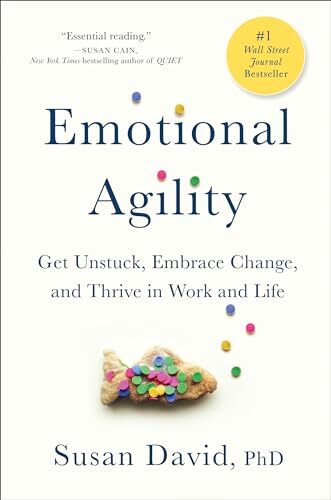
Like so many well-regarded self-help books, this one is a small kernel of valuable content, wrapped in a lot of fluff. It’s worth reading for that kernel, but I wish the economics of the publishing industry could do more to incentivize shorter books. This one in particular, being about emotions, has a lot of wishy-washy, high-level, non-actionable advice that you have to skim over to get to the good stuff.
Some of the key insights for me:
The moment between feelings and reactions
- There is a moment between when you feel something and when you react to it.
- Merely being aware of this moment is powerful.
- You can start noticing that moment.
- You can pry it open and stretch it out a bit.
- You can dig in and start to understand what you’re feeling rather than reacting blindly.
Bottle, brood, feel
There are three common reactions to emotions:
-
Bottle:
- You try to ignore your feelings, push them down, and move forward.
- The problem is that those feelings come back, and often with a vengeance.
-
Brood:
- You obsess over the feelings, go over them again and again, and dwell on them to the point of anger or despair.
- Brooding can even be a team sport, where you vent to others, sometimes to the point of fatiguing your listener, overwhelming them with complaints and your self-centeredness.
-
Feel:
- You allow yourself to feel your emotions, to be open to them, and to show yourself compassion.
- Imagine a small, upset child reacting to something they perceive as traumatic.
- How would you react to them?
- You probably wouldn’t tell them to “suck it up” or berate them for feeling this way.
- Instead, you’d go up to them, give them a hug, and show them compassion.
- Well, you should do the same for adults—including yourself.
Emotions are not facts
One of the key things that makes it possible to feel emotions (rather than bottle or brood) is the following realization:
Your thoughts and emotions are not facts.
- Just because a thought pops into your head like “I’m lazy and dumb” doesn’t mean it’s true.
- Just because you’re feeling fear doesn’t mean there’s something you need to be afraid of.
- A thought is just a thought.
- An emotion is just an emotion.
- You can let them happen.
- You can hear them and listen to them without accepting them as truth.
Stepping out
The idea behind “stepping out” is that you learn to let your thoughts and feelings happen and merely observe them.
- You work through your feelings, listen to them fully, and then make a decision on what to do based on your values, rather than the way those emotions make you feel.
- To get a sense of stepping out, say the same word over and over again.
- After 30 seconds or so, the word loses all meaning, and you start noticing its shape and sound—you’ve stepped out.
Tools for dealing with emotions and stepping out
-
Write. 20 minutes a day, a few days a week, pop open a journal and just start writing. Don’t judge. Don’t worry about grammar. Don’t show it to anyone else (in fact, a few days later, feel free to throw the old entries away). The mere act of writing (or even talking into a voice recorder) can be an incredibly effective way to work through thoughts and emotions.
-
Meditate. Simple exercise to start: sit in a quiet place and focus solely on your breath. The goal is to have no thoughts of any kind and only be aware of your breath. Of course, thoughts will inevitably come in and out, which is OK. When you notice this has happened, refocus on your breath. There’s no winning or losing here, no pressure—the whole point is to focus on your breath and be aware of what’s happening, including those thoughts.
-
Label. Try to explicitly identify the emotions you’re feeling and give each one a name. This will teach you to better understand what you’re feeling, and giving things names gives you some measure of power over them.
-
Third person. Try to think about yourself in the third person. An example from when Lebron James was making “the decision” of whether he should stay in Cleveland or move to Miami: “I did not want to make an emotional decision. I wanted to do what is best for Lebron James.” Note that initially, he used the first person (“I did not want to make”) and then, as a way to avoid being controlled by emotions, he switches to 3rd person (“do what is best for Lebron James”). This can be an effective way to step out.
Quotes
As always, I saved a few good quotes from the book:
Emotions are data, they are not directives
Life is full of diving boards and other precipices, but, as we’ve seen throughout this discussion of emotional agility, making the leap is not about ignoring, fixing, fighting, or controlling fear—or anything else you might be experiencing. Rather, it’s about accepting and noticing all your emotions and thoughts, viewing even the most powerful of them with compassion and curiosity, and then choosing courage over comfort in order to do whatever you’ve determined is most important to you. Courage, once again, is not the absence of fear. Courage is fear walking.
